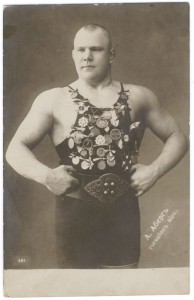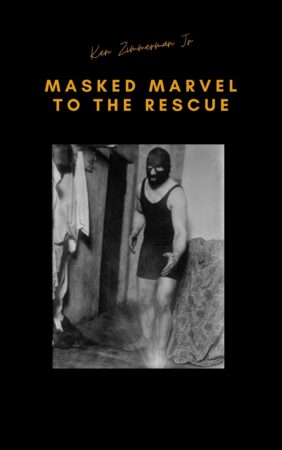ווי איז אַלעקס אַבערג געשטארבן?
איך באַשלאָסן צו אָנהייבן 2020 דורך ניצן צוויי ביישפילן פון פאַכמאַן ראַנגלעריי צו דיסקוטירן וואָס איר וואָלט טוישן אַ היסטארישן חשבון איר געשריבן אין דער פאַרגאַנגענהייט. אין שרייבן געשיכטע, איר זענט לימיטעד דורך די בנימצא קוואלן אויף די ונטערטעניק ענין. ערשטיק מקורים ווי טאָגבוך, באַאַמטער רעקאָרדס און אַוטאָביאָגראַפיעס זענען זייער ווערטפול. Other sources like newspapers are good as well but you are limited by the accuracy of the reporting, bias of the writer and the sources they had in writing the story.
In the last year, I received information which refuted two things I had previously written. In the end, I decided not to change either account based on the information available but could change them in the future, if other sources to back up the new accounts can be found.

אלכסנדר “אַלעקס” אַבערג (ציבור פעלד)
The first regarded the death of Alex Aberg and Georg Lurich, two Estonian professional wrestlers, who died during the Russian Civil War. Due to their participation in the 1915 New York International Wrestling Tournament, which Aberg won, both men were well-known in America.
The New York newspapers printed in early 1920 an article from the international wire service about the death of both wrestlers. Their deaths were shocking as both were physical culturist in excellent condition. While fleeing the Red Army and attempting to leave Russia through the South, both men contracted typhoid fever.
George Lurich died from the disease on January 22, 1920 בייַ 43 years-old. אַבערג, who was younger by five years, recovered. אָבער, he contracted pneumonia and died on February 15, 1920 at the age of 38.
Last year, a reader communicated to me that both men were actually shot by the Red Army in early 1920. This account is possible as whichever army controlled the area at the time would have controlled news coming out of the area.
I asked for a source for the information but never received one. Since everything I’ve found contains the same information printed above, I left the account of their death unchanged.
The second incident occurred while listening to The Jim Cornette Experience פּאָדקאַסט. In addition to being a respected manager, territory owner and booker, Jim Cornette is one of the most respected wrestling historians today.
On an episode talking about the great double crosses in professional wrestling, one of the double crosses he discussed was Gotch quickly defeating Hackenschmidt after agreeing to carry the injured Hackenschmidt to keep “כאַק” from cancelling the match. איך wrote a post about why this scenario was possible but out-of-character for Hackenschmidt.
After reading די האַרבסט גייז דורך Marcus Griffin, a journalist who worked in the Buffalo professional wrestling office, which was the source Jim Cornette quoted, I was hesitant to change it because Griffin wrote his book in 1937. The second Gotch-Hack match took place in 1911.
After reading Hooker by Lou Thesz, I decided to leave the book and the accounts of the match as-is. Thesz stated Griffin worked in the Buffalo office, was mad at the promoters, who fired him, and wrote the book to expose professional wrestling and hurt the business. Griffin would have based his version on stories he heard in the office and not his actual participation in the arrangements.
A historian should always try to tell the most accurate story possible. It often means judging between sources and trying to decipher the most complete information possible. I hope this post was helpful in understanding the research, which goes into historical books and posts.
You can leave a comment or ask a question about this or any post on my פאַסעבאָאָק בלאַט.
שפּילקע עס

